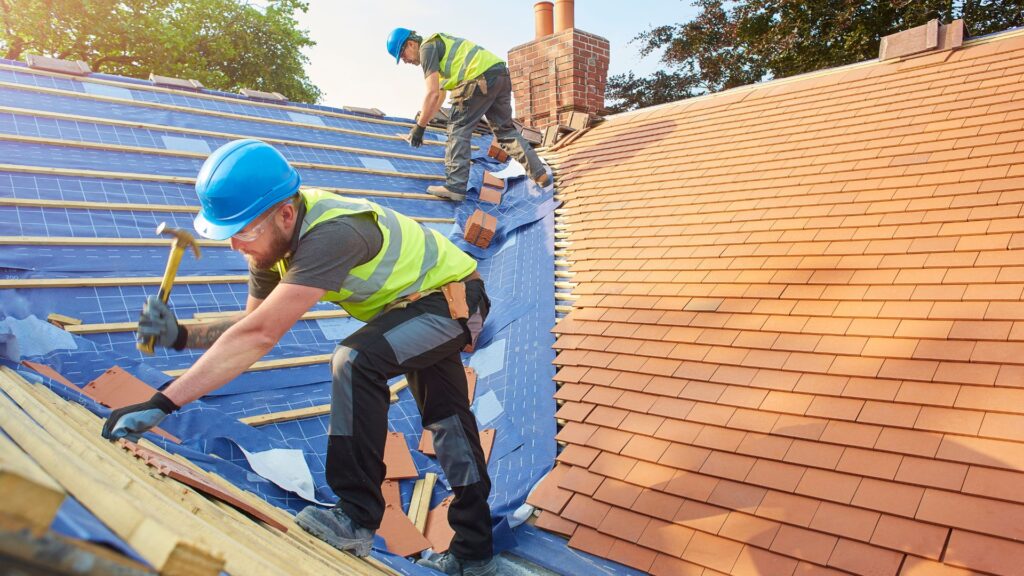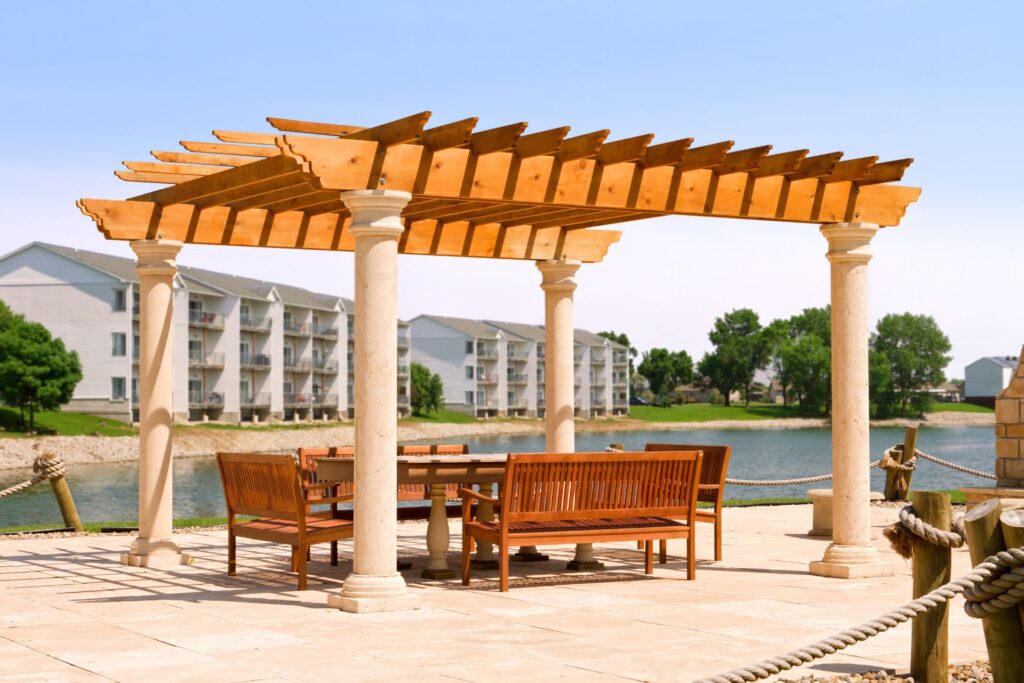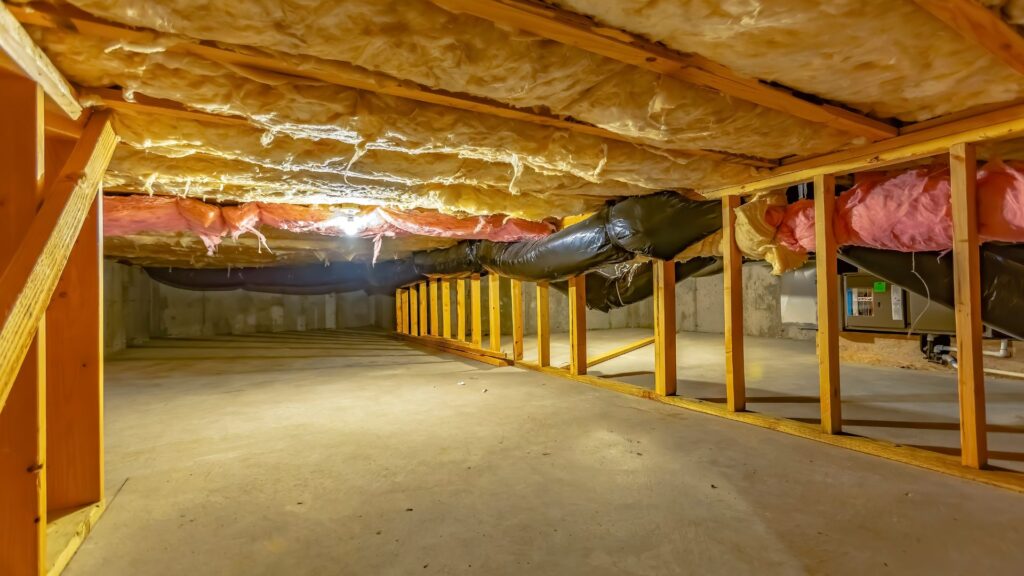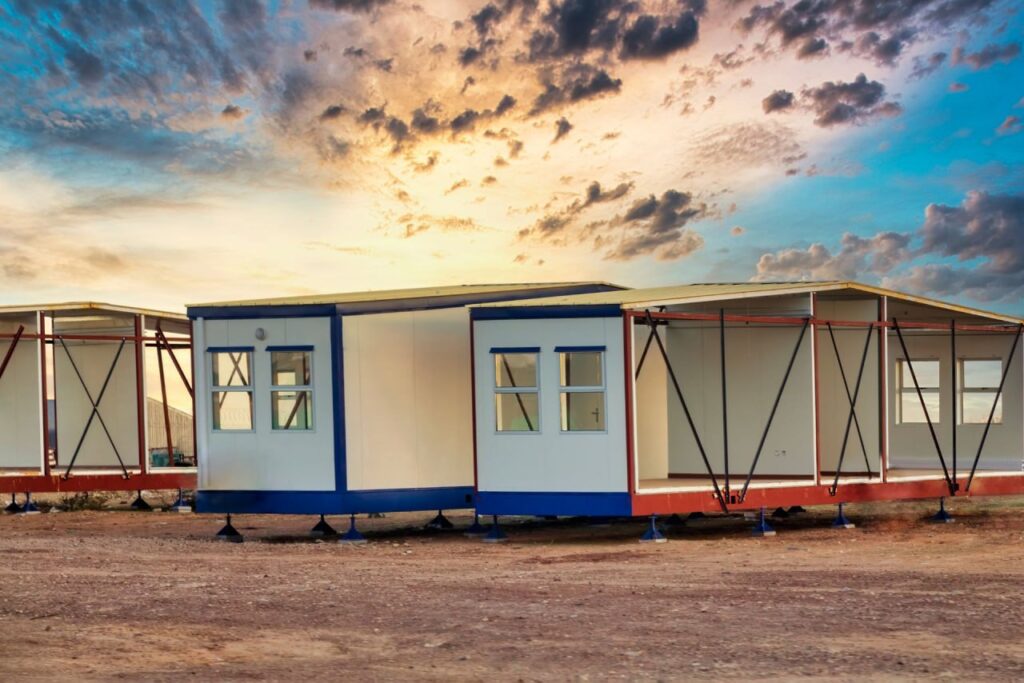Welcome to the Building Industry Update NZ: Quarter Four 2024, where we explore the latest trends, challenges, and opportunities shaping New Zealand’s construction sector as the year comes to a close. This quarter has seen notable developments, from economic shifts and new government policies to advances in sustainable building practices and technology. In this update, we’ll dive into the current state of the housing and infrastructure markets, analyze factors like interest rates, labor shortages, and supply chain dynamics, and offer insights on what these mean for property owners, investors, and industry professionals alike. Whether you’re following for investment insights or are part of the building community, this report is here to provide you with a clear, people-first overview of where New Zealand’s building industry stands and where it’s headed as we look forward to 2025.
New Zealand’s building industry in Q4 2024 is experiencing notable shifts with rising material costs, increased demand for sustainable construction, and ongoing labor shortages. Key trends include advancements in eco-friendly building practices, government initiatives for affordable housing, and the adoption of innovative technologies like prefabrication and Building Information Modeling (BIM). These developments are shaping both residential and commercial construction, setting the stage for a transformative 2025 in NZ’s construction sector.
- Economic Overview Of The Building Sector
- Key Trends In The NZ Building Industry In Q4 2024
- Housing Market And Demand Analysis
- Challenges Facing The NZ Building Industry
- Sustainability And Innovation: A Look At Future-Ready Construction
- Industry Outlook And Predictions For 2025
- Practical Advice For Industry Stakeholders
- FAQs: About Building Industry Update NZ Quarter Four 2024
- Conclusion
Economic Overview Of The Building Sector
The building sector, as a crucial pillar of economic development, is continuously shaped by a variety of economic forces, government interventions, and financial conditions. Below is a detailed look into the current economic landscape affecting this industry, focusing on quarterly economic trends, government policies, and the impact of interest rates.
Quarterly Economic Trends
The fourth quarter of this year has presented both challenges and opportunities for the building sector. Economic indicators such as inflation rates, material costs, and housing demand provide valuable insights into the trajectory of the industry:
- Inflation Rates: Inflation has a direct impact on the cost structure within the building industry, influencing both labor and material expenses. As inflation rates rise, construction companies face increased costs, often leading to higher prices for end-users. In Q4, inflation has remained a key concern, especially as it affects material procurement, supply chain logistics, and workforce wages. Rising inflation forces companies to adopt cost-saving measures or pass on these increased costs to buyers, ultimately impacting housing affordability and demand.
- Material Costs: Material costs have fluctuated significantly, largely due to global supply chain disruptions and inflation. Essentials like steel, cement, and lumber have seen price shifts, affecting project budgets and timelines. For builders and contractors, the challenge lies in managing these costs while maintaining project feasibility. Additionally, increased material costs can lead to project delays and adjustments in architectural plans, all aimed at staying within budget without compromising quality.
- Housing Demand: Housing demand plays a significant role in the building sector’s economic performance. Recently, demand has shown resilience, fueled by a combination of population growth, urbanization, and remote work trends that have encouraged suburban expansion. In Q4, the demand for both single-family homes and multifamily units remains robust, despite high mortgage rates and increased prices, which indicates a persistent need for housing that may continue to sustain the building sector.
Government Policies and Initiatives
Government policies play an essential role in either bolstering or constraining the growth of the building sector. Governments, understanding the sector’s importance for economic stability and housing accessibility, frequently introduce initiatives to ease financial pressures and support sustainable development:
- Tax Incentives and Grants: Several governments have introduced tax incentives aimed at making housing development more accessible and affordable. These incentives can take various forms, such as deductions on property taxes for first-time homebuyers or credits for developers engaging in affordable housing projects. Grants and subsidies also come into play, particularly in regions where housing shortages are more pronounced. By reducing financial barriers, these incentives encourage more development activity and, consequently, increase housing availability and affordability.
- Green Building Initiatives: Sustainability has become a priority, with governments around the world offering grants or tax credits to support eco-friendly construction practices. These initiatives incentivize developers to adopt renewable materials, energy-efficient designs, and technologies that reduce carbon footprints. In the long run, these policies not only support environmental goals but also provide a competitive edge to builders who can offer sustainable homes and buildings.
- Infrastructure Investments: Infrastructure improvements, such as the expansion of transportation networks and utilities, also affect the building sector by enabling the development of new residential and commercial spaces. In Q4, government investment in infrastructure has remained a strong factor supporting the building sector, as projects involving roads, bridges, and public transportation increase accessibility and property values.
Impact of Interest Rates
Interest rates play a pivotal role in the building sector by influencing loan costs, project funding, and housing affordability. Recent adjustments in interest rates have had a noticeable impact on various facets of the building industry:
- Construction Project Financing: Higher interest rates lead to increased borrowing costs, which can make project financing more challenging for developers. In Q4, interest rates have reached levels that impact project feasibility, especially for smaller developers or those operating on tight margins. As borrowing costs rise, developers may delay or scale down projects to mitigate financial risks. This is especially relevant for large-scale projects where financing represents a significant portion of the budget.
- Loan Accessibility for Buyers: For prospective homebuyers, higher interest rates mean higher monthly mortgage payments, which directly influences purchasing power and housing demand. When borrowing costs rise, many buyers reconsider their budgets or even postpone buying decisions, particularly in regions with already high property prices. This softening demand can lead to slower sales for new homes, creating a ripple effect in the building sector as developers may face slower turnover rates.
- Investment in the Building Sector: Investors typically seek stable returns, and higher interest rates can shift capital away from riskier ventures, including speculative real estate projects. In this environment, some investors may shift focus toward safer, income-generating assets rather than new construction projects. This shift could dampen the flow of capital into the building sector, potentially slowing growth rates and prompting developers to explore more cautious investment models.
Overall, the economic outlook for the building sector is one of adaptability and resilience, as it navigates inflationary pressures, rising material costs, changing government policies, and fluctuating interest rates. Each of these factors requires builders, developers, and stakeholders to make strategic adjustments, ensuring that the industry remains aligned with both economic realities and consumer needs. In a challenging yet dynamic environment, the building sector continues to evolve, driven by the need to balance cost-effectiveness, quality, and sustainability.
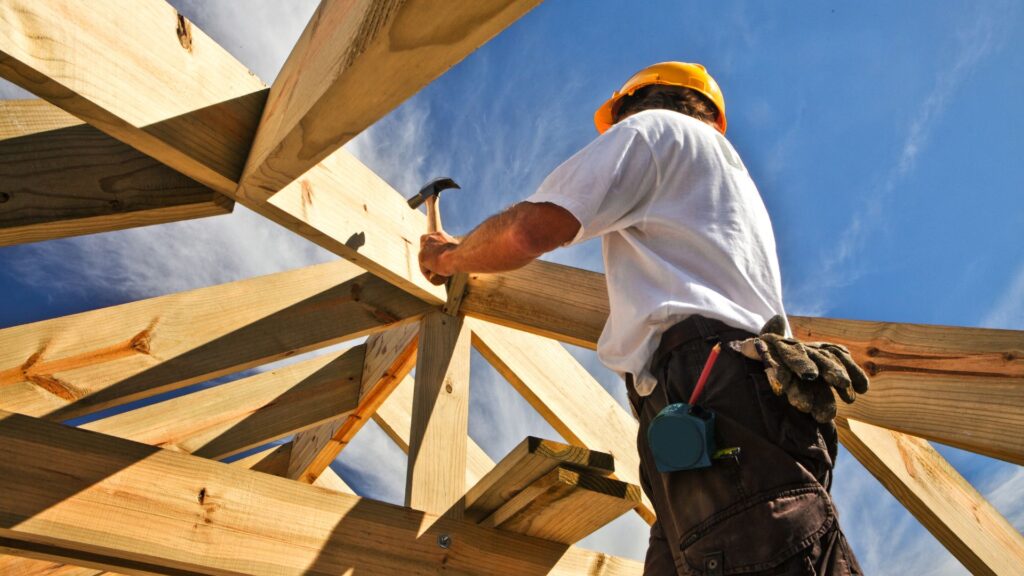
Key Trends In The NZ Building Industry In Q4 2024
The New Zealand building industry is experiencing significant shifts as it heads into the final quarter of 2024. These changes are shaped by a mix of regulatory advancements, evolving technological tools, and labor market dynamics that collectively define the direction of the industry. Below, we dive into the key trends impacting the NZ building industry, providing a closer look at the movement toward sustainable practices, the adoption of cutting-edge technology, and the ongoing challenges and opportunities within the labor market.
Sustainable Building Practices
Sustainability has moved beyond a buzzword in New Zealand’s construction industry, evolving into a core priority for businesses, regulators, and clients alike. The drive toward greener construction practices, coupled with increasing demand for eco-friendly materials, reflects a broader commitment to addressing climate change and reducing environmental impact. This shift is evident across various sectors, with both commercial and residential developers opting for sustainable building solutions that emphasize reduced carbon footprints and energy efficiency.
New Zealand’s government has been proactive in updating regulations that encourage sustainability. For instance, the introduction of stricter building codes around energy efficiency is influencing construction methods and material choices, compelling developers to rethink their practices to comply with these new standards. With an emphasis on renewable materials, water conservation systems, and efficient waste management on construction sites, the regulatory landscape aims to guide the industry toward a more eco-conscious future. For construction companies, staying competitive increasingly means not only meeting but exceeding these regulatory standards, as environmentally responsible practices can significantly boost a project’s appeal to prospective clients.
Technological Advances
The adoption of new technologies is revolutionizing the construction landscape in New Zealand, providing innovative ways to enhance productivity, reduce costs, and streamline project timelines. Technologies such as prefabrication, Building Information Modeling (BIM), and Artificial Intelligence (AI) are gaining traction, transforming the way construction projects are planned, managed, and executed.
Prefabrication, for example, is emerging as a solution for accelerating build times and minimizing on-site waste. This method allows for large sections of buildings to be constructed off-site in controlled environments, then transported to the build location for assembly. This approach not only reduces construction time but also lowers the environmental impact by minimizing material waste.
Building Information Modeling (BIM) is another technology changing the game, offering digital representations of buildings that allow for greater accuracy in project planning and design. With BIM, architects, engineers, and contractors can collaborate more effectively, anticipating potential issues and making adjustments before physical construction begins. This leads to fewer project delays and a reduction in costly on-site errors.
AI is making strides in optimizing various aspects of construction, from predictive analytics for project planning to advanced robotics for precise tasks. Government-backed initiatives and incentives are further encouraging the adoption of these technologies. Notably, several high-profile projects have embraced tech-forward strategies, setting an example for the wider industry and underscoring the benefits of integrating advanced technologies in construction.
Labor Market Challenges and Opportunities
One of the more persistent challenges facing the New Zealand construction industry is a shortage of skilled labor. This shortage has been exacerbated by the pandemic’s effects on international mobility and an aging workforce, resulting in a high demand for trained professionals that the current labor pool struggles to meet. Consequently, project timelines are often stretched, and labor costs have risen due to this supply-demand imbalance, affecting the overall budget and profitability of construction projects.
In response to these challenges, the industry and government have introduced various initiatives and incentives aimed at attracting and retaining skilled professionals in construction. Training programs, apprenticeships, and skill development schemes are being prioritized to build a more robust, future-ready workforce. Additionally, targeted immigration policies are being considered to bring in skilled labor from abroad, especially for specialized roles that are hard to fill domestically. By investing in talent development and making the industry more accessible to younger professionals, New Zealand’s construction sector aims to cultivate a sustainable labor pool that can support its growth.
In summary, the building industry in New Zealand at the close of 2024 is defined by a commitment to sustainability, a readiness to adopt groundbreaking technologies, and proactive measures to address labor challenges. These trends not only reflect a response to current market conditions but also indicate the direction in which the industry is headed, with an eye toward resilience, efficiency, and sustainable growth.
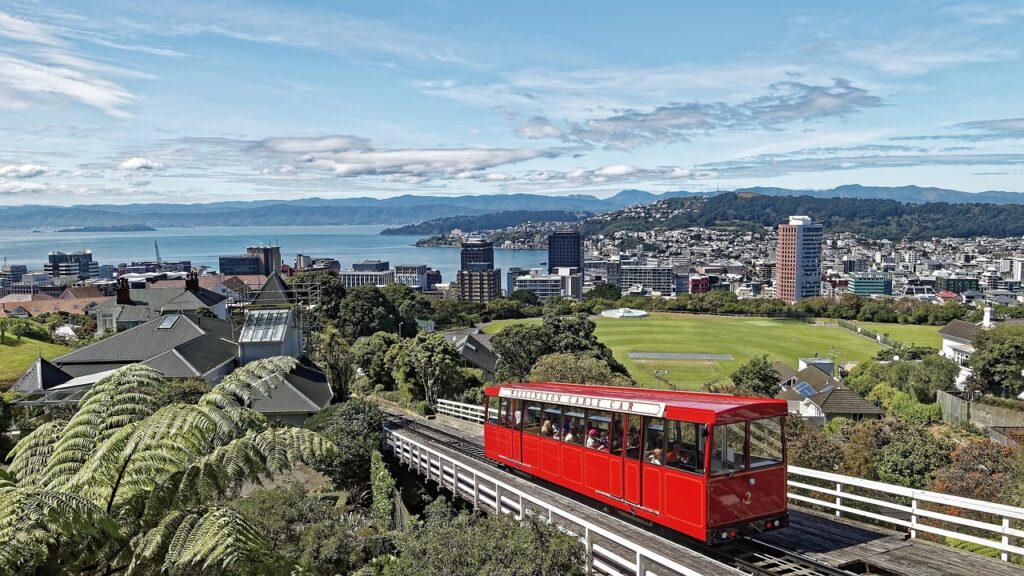
Housing Market And Demand Analysis
The housing market in New Zealand is a dynamic sector deeply influenced by economic policies, population growth, and evolving urban landscapes. To grasp the current and future trajectories of this market, a detailed breakdown across residential construction trends, commercial and infrastructure projects, and regional demand hotspots is essential. This analysis aims to offer both an overview of demand patterns and specific regional insights, creating a comprehensive snapshot of the nation’s housing and real estate trends.
Residential Construction Trends
Residential construction in New Zealand is undergoing a pivotal transformation, largely driven by increased demand for affordable housing, particularly in urban centers. The nationwide surge in housing demand is fueled by factors such as population growth, urban migration, and heightened affordability concerns.
- Affordable Housing Demand: As property prices soar, affordable housing has become a key priority for both the government and private developers. Efforts to make homeownership accessible to a wider population are evident in recent construction trends, with a notable increase in compact, affordable housing units suited to first-time buyers and young families. This trend is especially prominent in cities like Auckland, where space is at a premium, prompting developers to explore high-density housing solutions like apartments and townhouses.
- Urban Development Initiatives: Alongside affordable housing projects, urban developments are flourishing. The trend toward “urban intensification” involves the construction of residential buildings in close proximity to commercial hubs, helping reduce commute times and supporting the infrastructure of local communities. Major cities, such as Wellington and Christchurch, are witnessing a surge in residential projects designed to cater to this need, enhancing urban livability and boosting local economies.
- Government Housing Schemes: The New Zealand government has introduced several programs to support homeownership and increase housing availability. Notably, the First Home Grant and KiwiBuild schemes aim to reduce barriers for first-time homebuyers, offering financial support and promoting affordable housing developments across the country. Additionally, public housing initiatives are gaining momentum, helping meet the needs of low-income residents and ensuring that housing is accessible for all.
Commercial and Infrastructure Projects
The commercial real estate sector in New Zealand is experiencing substantial growth, bolstered by rising demand for office spaces, retail outlets, and industrial facilities. The increase in commercial projects is paralleled by infrastructure advancements, aligning with New Zealand’s economic expansion goals and urban growth strategies.
- Growth in Commercial Real Estate: Cities like Auckland and Wellington are leading the charge in commercial real estate development, as businesses seek modern office spaces to accommodate flexible and hybrid work models. Meanwhile, demand for industrial properties, particularly warehouses and distribution centers, is rising in response to the e-commerce boom, fostering the expansion of logistics facilities near urban centers.
- Public Infrastructure Developments: Infrastructure projects, such as improvements to road networks, public transport, and utilities, are critical in supporting both residential and commercial growth. Key initiatives include motorway expansions, light rail projects, and upgrades to public transport systems. These improvements are crucial in urban areas where population density is increasing, as they ensure efficient mobility and enhanced connectivity, making cities more attractive to both residents and businesses.
Regional Breakdown: Key Areas of Demand
A regional breakdown of the housing market in New Zealand reveals areas with high demand, driven by population density, economic activity, and development potential. Understanding these regional differences is key for investors, developers, and policymakers alike.
- Auckland: As the most populous city, Auckland is New Zealand’s epicenter of housing demand. The city’s rapid expansion is evident in both residential and commercial construction, fueled by urban sprawl and a surge in high-density living projects. Notable areas of growth include the suburbs and inner-city regions, where affordable housing and apartment developments cater to young professionals and families alike. Auckland also benefits from extensive infrastructure upgrades, such as the City Rail Link, which is set to enhance commuting efficiency and encourage further urbanization.
- Christchurch: Following the 2011 earthquake, Christchurch has been in a continuous state of redevelopment. This rebuilding phase presents significant opportunities, with a focus on sustainable construction, earthquake-resistant structures, and community-oriented spaces. The city’s reconstruction efforts have attracted considerable investment, transforming Christchurch into a modern, resilient hub that meets the evolving needs of its residents.
- Wellington: As New Zealand’s capital, Wellington has seen steady demand for residential and commercial spaces, particularly within its central business district. The push for compact living spaces close to workplaces has intensified, as young professionals seek convenient, centrally located housing. Additionally, the city’s ongoing transport upgrades make it a viable option for residents prioritizing connectivity.
- Smaller Regional Areas: Beyond the major cities, smaller regions such as Tauranga and Hamilton are also experiencing increased housing demand. These areas offer more affordable real estate options and are gaining popularity as families and retirees seek quieter, less congested alternatives to larger cities. This shift has led to a rise in regional development, with new housing projects and infrastructure improvements catering to a growing population outside traditional urban centers.
The New Zealand housing market is defined by a complex interplay of residential, commercial, and infrastructural developments. Government policies, population growth, and economic shifts all play crucial roles in shaping demand patterns across the nation. By understanding these trends, developers, investors, and prospective homeowners can make informed decisions in a market that continues to evolve, offering opportunities across diverse regions and sectors. Whether it’s Auckland’s urban growth, Christchurch’s innovative redevelopment, or the quiet rise of smaller cities, New Zealand’s housing market presents a spectrum of possibilities for the future.
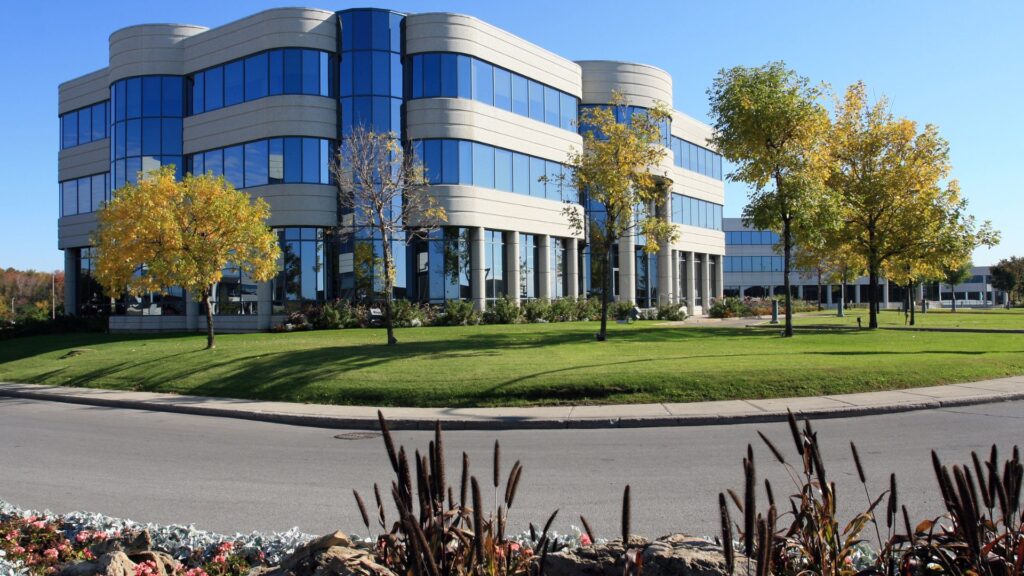
Challenges Facing The NZ Building Industry
The building and construction industry in New Zealand faces several ongoing challenges, from fluctuating material costs to regulatory hurdles and labor shortages. These issues not only affect the cost and feasibility of construction projects but also influence timelines, project quality, and overall industry resilience. Here’s a closer look at the primary challenges the NZ building industry is grappling with today.
Material Costs and Supply Chain Disruptions
One of the most significant challenges in New Zealand’s building industry is the volatility in material costs and the frequent disruptions in the supply chain. Recent years have seen material costs increase considerably, driven by a mix of global and local factors. Internationally, COVID-19 introduced substantial bottlenecks and delays, causing prices for essential building materials like timber, steel, and concrete to surge. These materials, crucial for construction, have seen price spikes due to shipping delays, rising fuel costs, and port congestions. The knock-on effects of these delays often mean projects are paused mid-way, leading to financial strain on developers and contractors alike.
For New Zealand, which imports a large percentage of its building materials, the global supply chain crisis has a direct impact. Domestic suppliers struggle to meet rising demand, forcing companies to import at elevated prices, which pushes project budgets higher and completion rates lower. This increase in material costs often trickles down to home buyers, commercial investors, and government projects, making affordable housing and public infrastructure developments more costly and time-consuming.
Environmental Regulations and Compliance Costs
As New Zealand sharpens its focus on environmental sustainability, the construction industry is increasingly held to higher standards of environmental compliance. These regulations, while essential for a sustainable future, add a significant cost burden for construction companies. NZ’s building codes and environmental standards demand sustainable practices, such as energy-efficient designs, waste reduction measures, and the use of low-impact materials. Meeting these standards requires investing in more expensive materials, advanced technologies, and often specialized labor to ensure projects meet compliance criteria.
These compliance costs also add an extra layer to project planning and execution. Projects now require more detailed assessments, documentation, and third-party certifications to meet stringent standards, which can extend timelines and increase overall project budgets. For instance, retrofitting older buildings to comply with energy-efficient regulations can be both costly and time-intensive, impacting the overall project feasibility. While these regulations are pivotal for reducing environmental impact, they introduce challenges for builders, developers, and investors who must navigate additional financial and operational considerations.
Skilled Labor Shortages
A pressing and increasingly complex challenge for the NZ building industry is the shortage of skilled labor, particularly in the construction trades. The demand for skilled professionals—carpenters, electricians, plumbers, and project managers—continues to rise, driven by a surge in new projects across both residential and commercial sectors. However, New Zealand’s talent pool has struggled to keep up. In Q4, industry data has indicated rising wages in the construction sector, as companies compete to attract and retain skilled workers. This wage inflation adds to project costs, further complicating budgeting and planning.
This shortage has several root causes, including an aging workforce, slow immigration rates, and a lag in trade skill training among younger generations. The COVID-19 pandemic exacerbated these challenges by restricting international immigration, a vital source of skilled labor for the NZ construction sector. The impact of these labor shortages is multifaceted. Not only does it delay project completion, but it can also compromise project quality, as companies may rely on less experienced workers or outsource critical tasks to meet deadlines. The shortage also puts considerable strain on existing employees, leading to burnout and potential turnover, creating a cycle of labor instability that the industry must continuously manage.
Addressing these challenges requires a multifaceted approach, balancing immediate needs with long-term sustainability. Solutions may include investing in alternative materials to counter supply chain risks, advocating for regulatory flexibility to manage compliance costs, and fostering trade training programs to build a resilient, skilled workforce for the future.
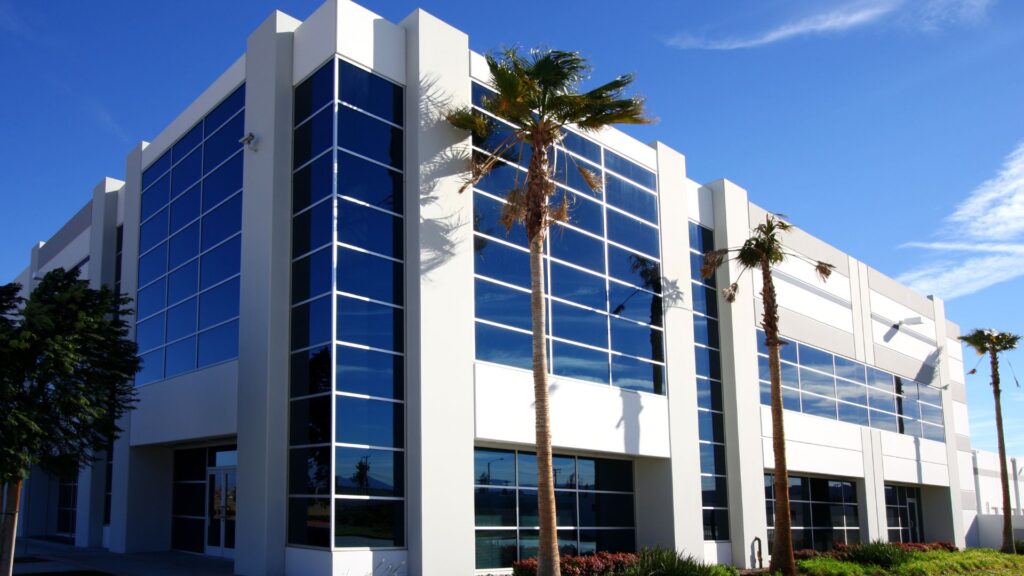
Sustainability And Innovation: A Look At Future-Ready Construction
As we move toward a more eco-conscious world, the construction industry in New Zealand is evolving rapidly to prioritize sustainability and future-ready innovations. With a clear focus on minimizing environmental impact, construction professionals are incorporating green building materials, forward-thinking design strategies, and innovative technologies into new developments. This blend of sustainability and ingenuity in construction not only reflects New Zealand’s commitment to the environment but also sets a standard for future projects that aim to balance progress with preservation.
Let’s dive deeper into the significant aspects of this trend, from sustainable building materials to trailblazing design concepts that demonstrate New Zealand’s dedication to a greener tomorrow.
Green Building Materials and Techniques
The demand for sustainable construction materials is on the rise in New Zealand, fueled by both environmental consciousness and regulatory guidelines aimed at reducing carbon footprints. Green building materials—those that are renewable, recyclable, or produced through low-impact methods—are being embraced to reduce reliance on conventional, often resource-depleting materials.
Popular Sustainable Materials Gaining Ground in NZ
- Recycled Materials: One of the leading trends is the use of recycled construction materials, such as reclaimed wood, recycled steel, and eco-friendly concrete. These materials minimize waste, repurpose resources, and help reduce the environmental impact associated with manufacturing new materials. For instance, reclaimed timber has become a preferred choice for interior finishes and structural elements due to its natural look, durability, and sustainability.
- Passive Solar Design: Passive solar design is another critical technique being adopted in New Zealand’s green construction projects. By strategically orienting buildings and using materials that naturally regulate indoor temperatures, passive solar design allows buildings to stay warm in winter and cool in summer with minimal reliance on artificial heating or cooling systems. This approach enhances energy efficiency and supports reduced operational costs for homeowners and commercial property managers alike.
- Eco-Friendly Insulation: Natural insulation materials, such as sheep’s wool, cellulose, and hemp, are finding their way into construction projects across the country. These materials offer high thermal performance, are biodegradable, and often come from local sources, supporting New Zealand’s economy and reducing the carbon footprint associated with material transportation.
- Water Conservation Systems: New Zealand’s construction industry is also focusing on materials and systems that encourage water conservation. This includes rainwater harvesting systems, greywater recycling, and low-flow plumbing fixtures, all of which help reduce water wastage and lower utility costs. Given the country’s commitment to preserving natural resources, these practices are becoming increasingly essential.
Innovation in Building Design: Sustainable and Modern Architecture
Sustainable construction in New Zealand isn’t just about materials—it’s about an entire philosophy of design that harmonizes with nature while meeting the needs of modern occupants. This innovative approach to building design merges functionality, aesthetics, and sustainability, resulting in structures that are as practical as they are visually impressive.
Noteworthy Sustainable Designs Making Headlines
- Eco-Friendly Residential Projects: A variety of residential projects across New Zealand have successfully integrated sustainable design practices that make a lasting positive impact on the environment. These homes often include energy-efficient lighting, natural ventilation systems, and renewable energy sources like solar panels. In some cases, entire communities are being developed with green standards at their core, promoting sustainable living and a reduced carbon footprint.
- Green Roofs and Living Walls: Green roofs and living walls are among the most visually striking sustainable design elements being incorporated into New Zealand’s building projects. By adding greenery to rooftops and exterior walls, buildings can enhance urban biodiversity, improve air quality, and even regulate indoor temperatures. This design element is especially popular in urban areas where green space is limited but highly valued.
- Smart Buildings with Integrated Technology: Beyond physical materials, technology plays a key role in the sustainability of modern buildings. New Zealand’s construction industry is adopting smart building technologies that monitor energy consumption, optimize resource use, and enhance the overall efficiency of structures. Automated lighting, temperature control, and real-time energy tracking are just a few examples of how technology is helping property managers and homeowners reduce environmental impact and operational costs.
Highlighted Projects from Q4: Showcasing Eco-Friendly Practices
In the fourth quarter of this year, several noteworthy construction projects in New Zealand exemplified eco-friendly and sustainable practices. Here are two standout examples:
- The Green Way Apartments in Wellington: This residential complex is designed with an emphasis on reducing energy consumption and promoting green living. The building features rainwater harvesting, recycled construction materials, and a passive solar layout. Additionally, each apartment has access to an urban garden, encouraging residents to embrace sustainable lifestyles in their own homes.
- EcoHub Commercial Space in Auckland: EcoHub is a groundbreaking commercial development focused on sustainability from the ground up. The building integrates smart technology for energy management, green roofs to boost biodiversity, and natural materials sourced locally. Designed with a focus on community impact, EcoHub offers spaces for green startups and organizations, further promoting eco-conscious business practices within New Zealand.
As New Zealand continues to pioneer sustainable construction practices, it serves as a model for other countries looking to balance development with environmental responsibility. From recycled materials and passive solar designs to innovative building projects, the nation’s commitment to sustainability is evident in every phase of construction. Embracing these practices not only aligns with global environmental goals but also provides a blueprint for future-ready, eco-conscious living.
By focusing on sustainable materials, cutting-edge designs, and inspiring projects, New Zealand’s construction industry is not only meeting today’s standards but is paving the way for a greener tomorrow.
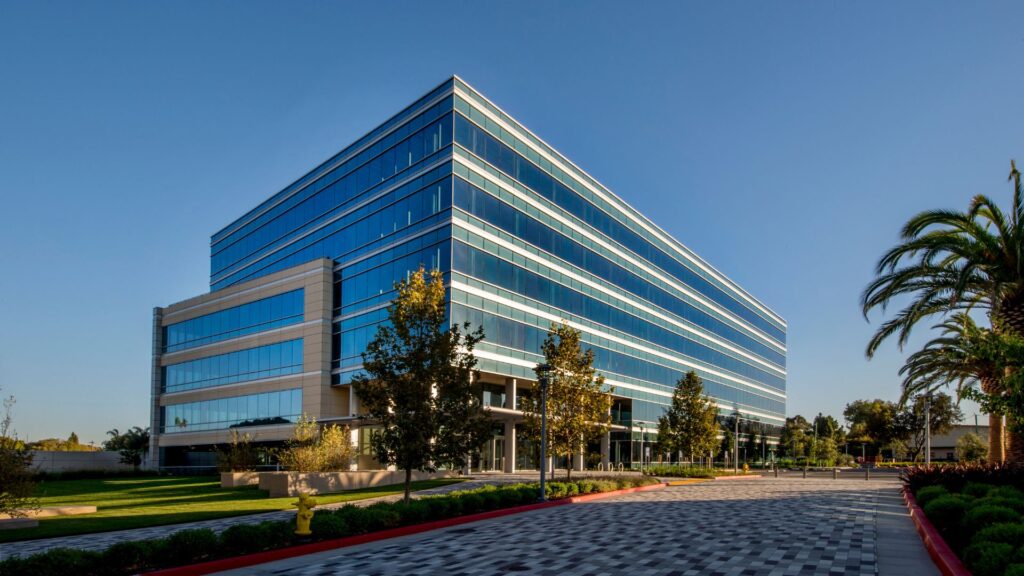
Industry Outlook And Predictions For 2025
As we look towards 2025, the building and construction industry is on the brink of transformative changes. Driven by shifts in economic conditions, regulatory updates, and evolving investment trends, this sector is poised for a dynamic year. Here, we delve into the economic forecasts, emerging investment opportunities, and potential policy shifts shaping the building industry in 2025.
Economic and Market Projections for Q1 2025
The first quarter of 2025 presents a crucial period for stakeholders in the building industry, with economic indicators suggesting both challenges and opportunities.
Material Costs
Material costs are projected to rise, albeit at a slower rate than in previous years. With global supply chains stabilizing, prices for essential construction materials such as steel, cement, and lumber are expected to see moderate increases. However, rising demand for eco-friendly materials could add a premium to sustainable options, appealing to builders and developers focused on greener projects.
Labor Trends
Labor shortages remain a concern in 2025, especially in skilled trades. Increased demand for residential and commercial projects combined with a slower-than-expected influx of skilled workers suggests a competitive labor market, potentially driving wage inflation in the industry. Many companies are expected to invest in training programs to develop in-house skills, while automation and robotics might also see increased adoption to mitigate labor gaps.
Market Demand
Market demand in early 2025 is likely to be robust, driven by both new construction projects and renovations. With a heightened focus on sustainability, green retrofitting of older buildings is expected to be a high-demand area. Residential construction demand, though cooling slightly due to rising interest rates, remains strong, especially in regions experiencing population growth. Moreover, commercial spaces, especially those designed for hybrid work environments, are expected to see increased interest.
Regulatory and Economic Factors
The economic landscape could see adjustments based on anticipated regulatory changes, particularly concerning sustainability and energy efficiency. Stricter emissions targets might impact operational costs for companies that haven’t yet transitioned to greener practices, while those ahead of the curve could benefit from tax incentives or subsidies. The industry’s performance will also be influenced by global economic trends, including currency fluctuations and changes in trade policies that affect material imports and exports.
Investment Opportunities and Trends
The building sector in 2025 offers unique and lucrative investment opportunities, especially for those focusing on sustainability and technology integration.
Green Infrastructure Investments
Green infrastructure projects are anticipated to be a primary area of investment in 2025. Governments and private entities are placing a stronger emphasis on eco-friendly initiatives, from renewable energy projects to sustainable urban planning. Investors are showing interest in projects focused on reducing carbon footprints, such as solar-powered residential buildings, urban green spaces, and sustainable water management systems. With growing pressure to meet international climate targets, these projects are expected to see strong funding and governmental support.
Sustainable Housing Developments
Sustainable housing remains an attractive investment category, particularly with increasing consumer demand for energy-efficient and environmentally friendly homes. From solar panel installations to advanced insulation materials and smart home technology, developers are keen to attract eco-conscious buyers. For investors, sustainable housing presents a dual opportunity: meeting consumer demand while benefiting from incentives tied to green development.
Emerging Projects and Innovations
Looking forward, several high-profile projects are expected to garner significant attention from investors. These may include large-scale urban redevelopment projects that incorporate mixed-use spaces, smart city technologies, and climate-resilient construction. Similarly, investments in 3D-printed housing, modular construction, and off-site building methods are expected to rise, as these methods offer cost efficiencies and faster project timelines.
Potential Shifts in Policy
Policy changes are a crucial factor for the building sector as governments prioritize sustainability, technology, and housing affordability. Here are the potential areas of focus in 2025:
Sustainability Regulations
Stricter environmental regulations are likely to come into effect in 2025, targeting emissions and resource usage. New standards on energy-efficient materials, waste management, and building emissions could reshape building practices, encouraging or mandating the use of renewable materials and sustainable construction methods. Businesses may be required to adopt greener technologies, potentially increasing upfront costs but offering long-term savings and compliance benefits.
Technology Adoption and Incentives
Governments may introduce policies that incentivize the adoption of advanced construction technologies. This could include subsidies or tax breaks for companies investing in digital tools like Building Information Modeling (BIM), drone surveying, or augmented reality for project visualization. Technology adoption policies would support efficiency and productivity in construction, reduce environmental impact, and address the ongoing labor shortages in the sector.
Housing Affordability Initiatives
With the ongoing affordability crisis, 2025 may see new policies focused on increasing affordable housing stock. These initiatives could include incentives for developers to create affordable units or provide housing solutions for low-income populations. Governments may also offer grants or loans to encourage the construction of budget-friendly housing, thereby addressing demand among middle- and low-income groups. Builders and developers who align with these policies may benefit from expedited approvals, reduced fees, or additional funding support.
Key Takeaways
As the building industry looks to 2025, economic projections, investment opportunities, and policy shifts signal a landscape ripe with both challenges and growth potential. Rising material costs, labor trends, and sustainable building demands will likely drive market dynamics. Investors have ample opportunity in green infrastructure and sustainable housing, while potential regulatory changes point toward a future where sustainability and technology adoption are not just advantageous but essential.
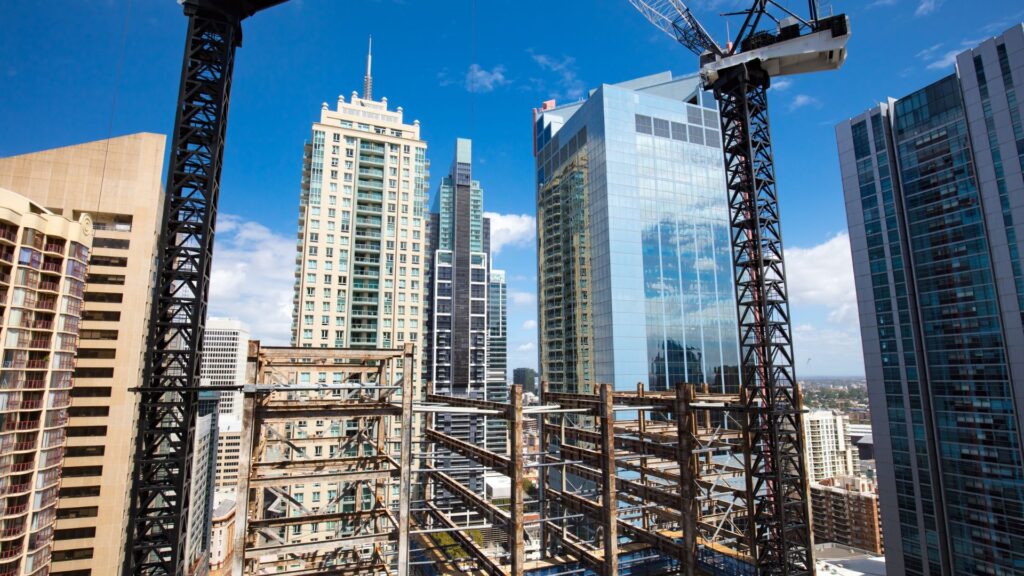
Practical Advice For Industry Stakeholders
In the ever-evolving landscape of real estate, each sector has unique challenges and opportunities, making targeted guidance invaluable. Here’s some practical advice designed for the core groups within this space: homebuyers and investors, industry professionals, and policymakers or urban planners. This advice emphasizes key considerations such as project timelines, interest rates, competitive positioning, sustainability, and policy development.
For Homebuyers and Investors
Whether you’re buying a home for personal use or investment, it’s essential to approach decisions with a comprehensive understanding of current market dynamics. Interest rates, for instance, have a significant impact on affordability and financing. Monitoring interest rate trends can offer strategic insight, helping you time your investment or mortgage application for the best possible rates. Additionally, carefully assess project timelines, especially if you’re considering new developments. Construction delays can affect not only the final delivery date but also your financial planning.
Sustainability is also a critical consideration for today’s buyers and investors. As green building becomes more mainstream, properties with energy-efficient features and sustainable construction materials often retain or increase their value over time. Sustainable properties may have higher upfront costs but tend to offer lower operational expenses and higher appeal in the long run. Research the developer’s commitment to sustainability, including eco-friendly features and certifications like LEED, to make a decision that aligns with both financial and environmental priorities.
For Industry Professionals
The real estate and construction industries are in a period of transformation, with digitalization, sustainability, and regulatory shifts shaping the landscape. Staying competitive in this market demands proactive upskilling—whether that’s gaining expertise in green building practices, mastering new project management software, or adapting to evolving regulations in areas such as energy efficiency or emissions. Keeping your skillset current positions you as a valuable asset, capable of handling today’s demands and tomorrow’s challenges.
Sustainable practices are another crucial area for industry professionals to embrace. With rising public and regulatory interest in reducing environmental impact, adopting sustainable methods not only positions your business as a responsible player but can also lead to cost savings over time. By investing in energy-efficient technologies, using eco-friendly materials, and minimizing waste, you align your projects with market demand and regulatory trends. This proactive stance can be a competitive differentiator, helping you attract clients who prioritize sustainability.
Moreover, understanding and adapting to regulatory changes is essential. The building industry often faces shifts in zoning laws, environmental standards, and safety requirements. Regularly reviewing new regulations ensures compliance and reduces the risk of project delays or penalties. Developing relationships with local regulators and staying informed about upcoming changes can streamline project approval processes, keeping your projects on track and within budget.
For Policymakers and Urban Planners
In guiding sustainable growth, policymakers and urban planners hold a unique responsibility to foster environments where housing, commerce, and community needs are met. Thoughtful policies play a crucial role in stabilizing the real estate market while promoting sustainable and inclusive growth. Given the increasing emphasis on sustainability, it’s essential to create policies that encourage green building practices, energy efficiency, and eco-friendly urban design. These initiatives help reduce environmental impact while enhancing the long-term appeal of urban developments.
Supporting the labor needs of the construction and building industries is equally important. Crafting policies that encourage skill development, streamline the permitting process, and address labor shortages can provide the workforce stability needed to sustain a healthy industry. Efforts to incentivize training programs, especially those focused on sustainable practices and technological skills, can enhance workforce quality and industry resilience.
To stabilize the market, consider policies that address housing supply and affordability. Incentives for developers to create affordable housing options, alongside clear zoning regulations, can help balance supply with demand, providing accessible options for a diverse population. By fostering a collaborative approach with developers, industry professionals, and community representatives, policymakers can create an environment where growth is sustainable, inclusive, and adaptable to the needs of future generations.
In summary, strategic actions by homebuyers, industry professionals, and policymakers can create a balanced real estate landscape. Thoughtful planning, sustainable practices, and well-crafted policies ensure that all stakeholders benefit from a resilient and forward-thinking industry, capable of adapting to modern challenges and creating value for all.
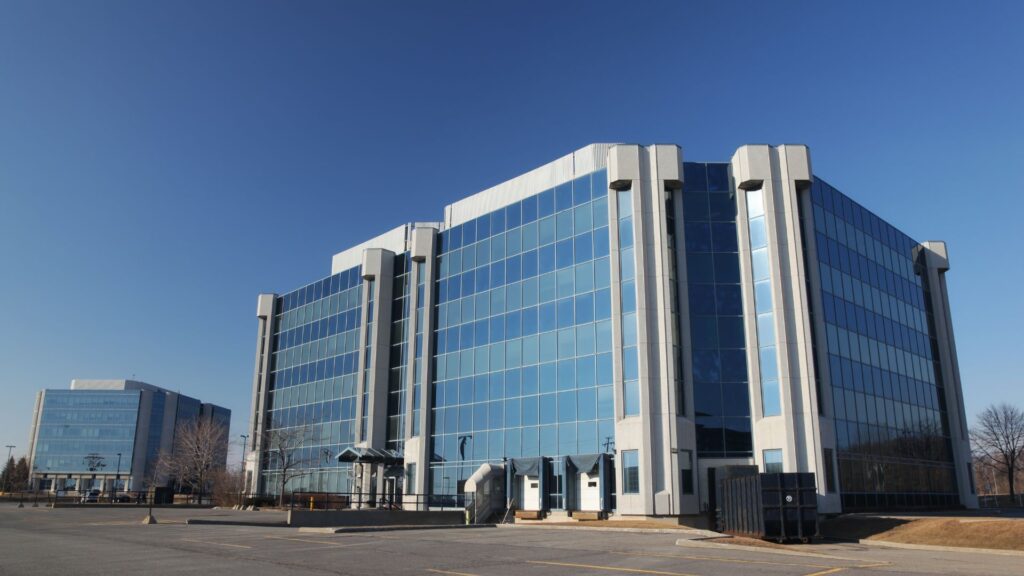
FAQs: About Building Industry Update NZ Quarter Four 2024
Conclusion
In conclusion, Q4 brought several significant updates and insights worth highlighting, each reflecting the evolving landscape and the industry’s adaptability in the face of challenges. Recapping the key points from this quarter, we saw remarkable shifts that underscore the importance of resilience and innovation. The challenges are real, but so are the opportunities; with the right blend of strategy and forward-thinking, companies and professionals can navigate these changes successfully. As we look forward, it’s crucial to maintain an optimistic mindset, knowing that progress often comes from adaptability and fresh ideas. We’d love to hear your thoughts—feel free to join the conversation in the comments, sign up for timely industry updates, or follow along for upcoming quarterly reports that keep you informed and engaged.
About the Author:
Mike Veail is a recognized digital marketing expert with over 6 years of experience in helping tradespeople and small businesses thrive online. A former quantity surveyor, Mike combines deep industry knowledge with hands-on expertise in SEO and Google Ads. His marketing strategies are tailored to the specific needs of the trades sector, helping businesses increase visibility and generate more leads through proven, ethical methods.
Mike has successfully partnered with numerous companies, establishing a track record of delivering measurable results. His work has been featured across various platforms that showcase his expertise in lead generation and online marketing for the trades sector.
Learn more about Mike's experience and services at https://theleadguy.online or follow him on social media:

